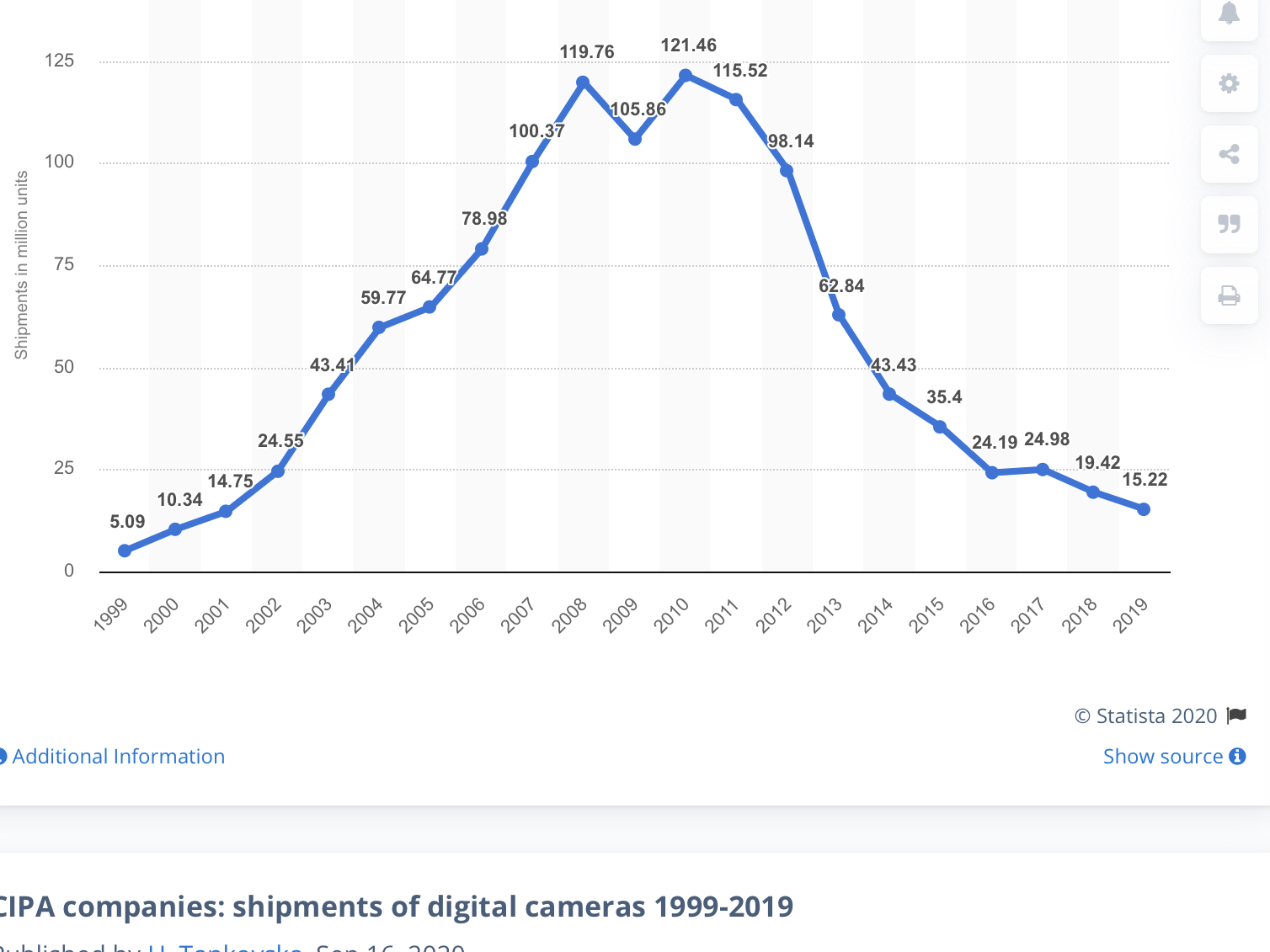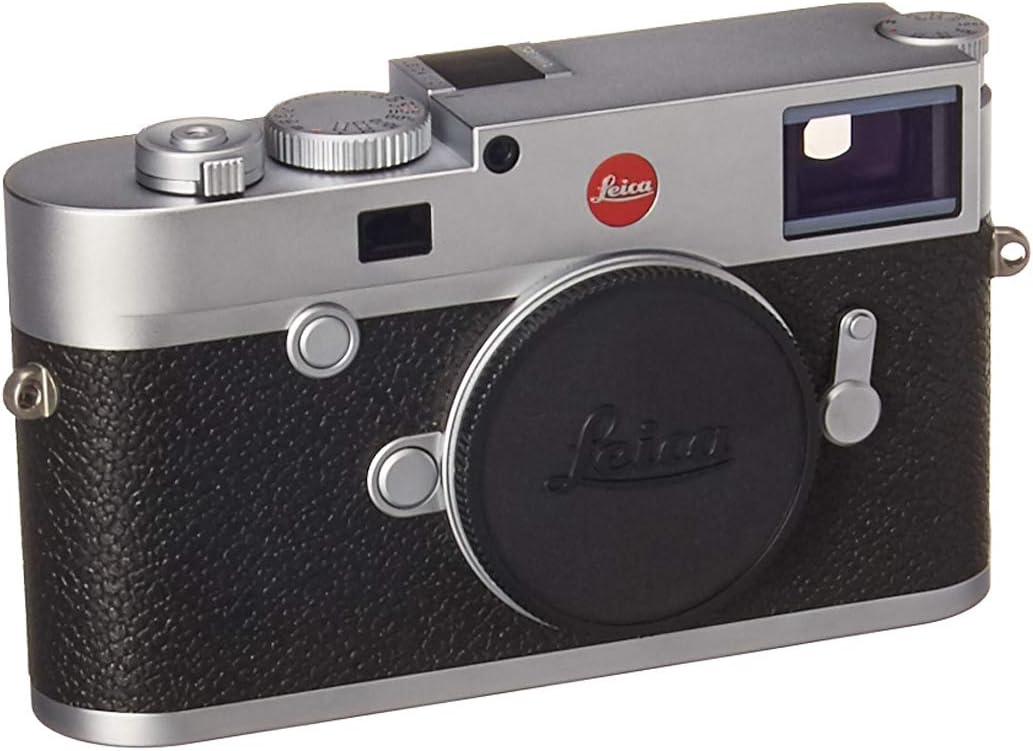Pao Dolina
Active member
https://www.dpreview.com/news/55975...s-mostly-recovered-from-its-covid-19-downturn
And I personally expect November-December 2020 to not ship more than 2 million digital still cameras (DSC).
A grand total of less than 9 million DSC shipped globally for 2020.
This would be the worst year since the all time high of 121 million back in 2010
Will it settle back again at about 1999's 5.06 million?
In 2019 the global shipment of DSC was 15.2 million vs 1.52 billion of smartphones.
That's a ratio of 1 DSC to 100 smartphones.
Camera makers are now focusing on camera features iPhones and Androids will have difficulty replicating due to their limited size. Though these "advantages" may not last long due to computational photography. The features are
And I personally expect November-December 2020 to not ship more than 2 million digital still cameras (DSC).
A grand total of less than 9 million DSC shipped globally for 2020.
This would be the worst year since the all time high of 121 million back in 2010
Will it settle back again at about 1999's 5.06 million?
In 2019 the global shipment of DSC was 15.2 million vs 1.52 billion of smartphones.
That's a ratio of 1 DSC to 100 smartphones.
Camera makers are now focusing on camera features iPhones and Androids will have difficulty replicating due to their limited size. Though these "advantages" may not last long due to computational photography. The features are
- Larger image sensors that allow for higher ISO and dynamic range
- Super zooms that allow 35mm equivalent optical zooms of 20mm to 3,000mm
- Better water resistance or ruggedness
- Built-in photo paper printing
- Larger image sensor: iPhone is now 47% larger than before & Android made improvements as well
- Super zooms: Have been addressed by having more than 1 rear cameras with ultrawide, wide & telephoto zoom ranges
- Better water resistance: iPhones 12 now can do IP68 under IEC standard 60529 (maximum depth of 6 meters up to 30 minutes) & Android can do something similar as well
- Built-in photo paper printing... smartphone makers are smart enough not to sell to hipsters.


